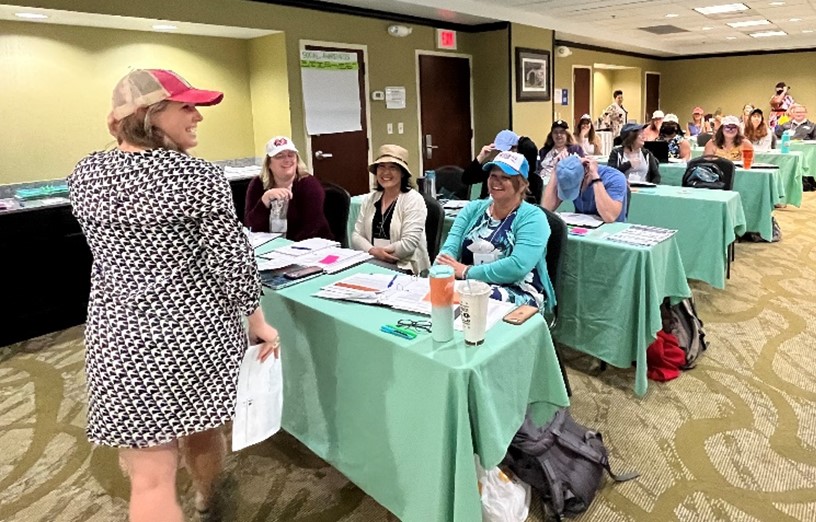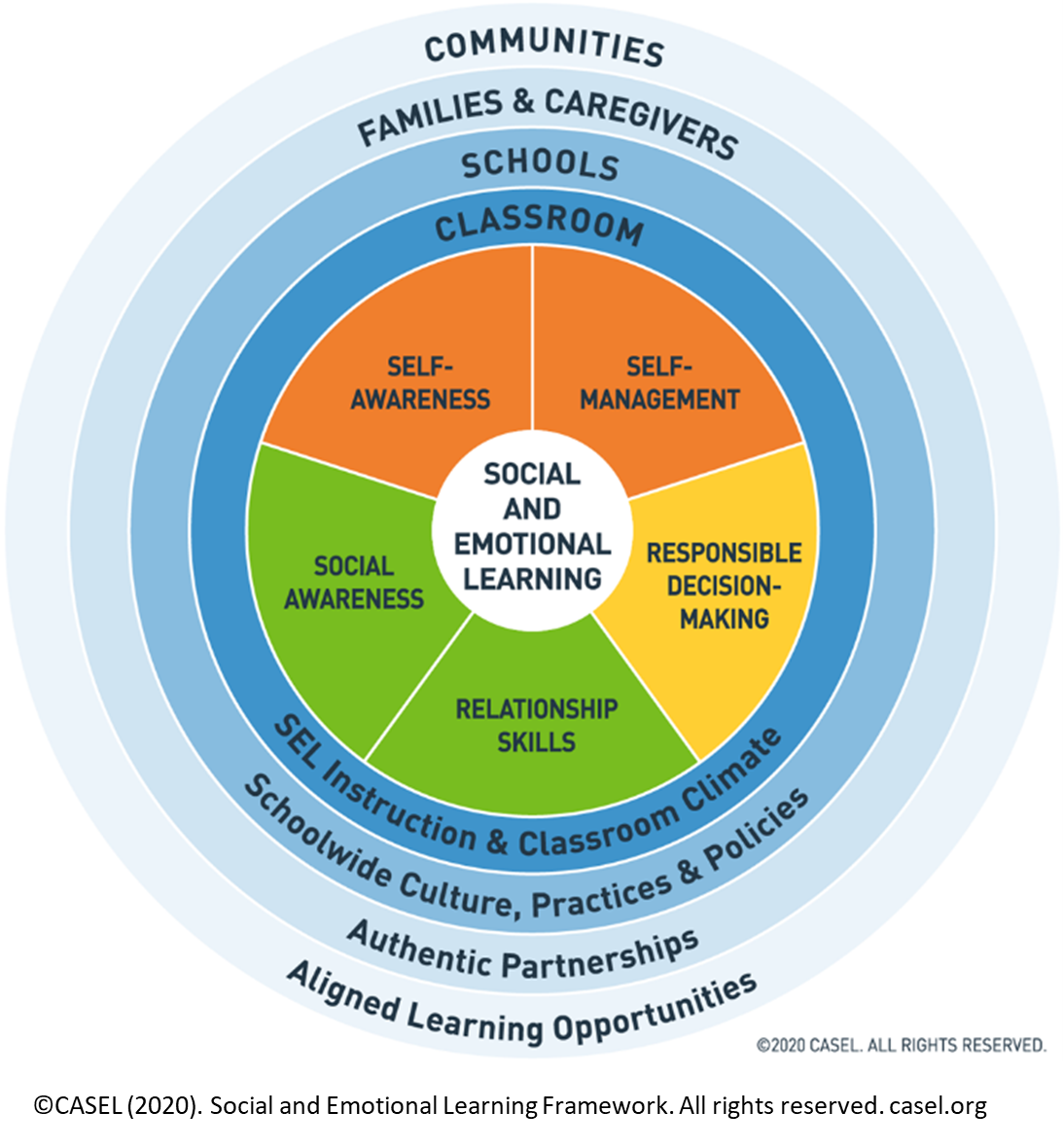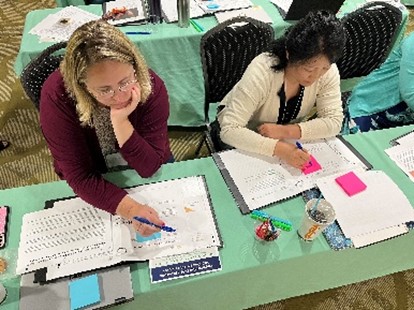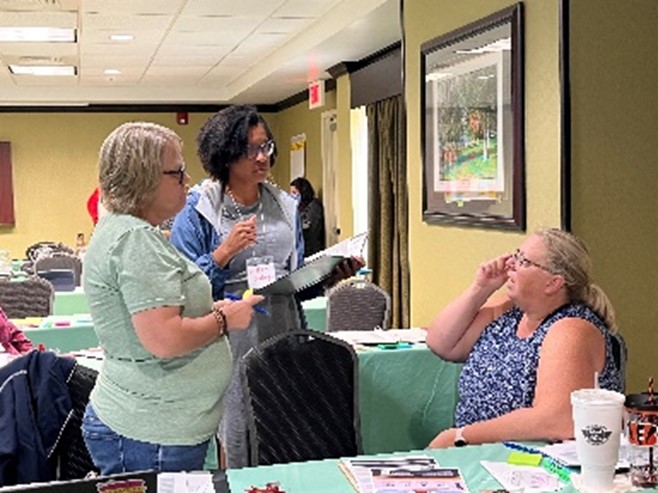Home Blogs Planting SEAD in Mathematics for Meaningful Learning
Planting SEAD in Mathematics for Meaningful Learning
Appalachia | September 27, 2022

"I already work to build strong relationships with my high school students, but trying to teach social and emotional learning explicitly during scheduled times feels awkward and students don't buy in. [This workshop] has taught me I can embed it authentically in math instruction instead of forcing it without context!"
What an "Aha!" moment for this educator! This comment was one of several powerful takeaways participants shared at a recent workshop REL Appalachia hosted in partnership with the Kentucky Department of Education. In this blog post, we explore some of the content on integrating social and emotional learning (SEL) into mathematics that REL Appalachia staff shared, including the "why" behind the approach and resources for getting started.

What is SEAD?
The Collaborative for Academic, Social, and Emotional Learning (CASEL) provides a framework for understanding SEL as individual competencies across five domains: self-awareness, self-management, social awareness, relationship skills, and responsible decisionmaking.1 These competencies are introduced and reinforced across key settings in children's school life: in their classrooms and schools, with their families and caregivers, and within their communities.
Taking this framework further, the Aspen Institute's National Commission on Social, Emotional, and Academic Development recognizes the interaction of students' attitudes, beliefs, and mindsets with their social, emotional, and cognitive skills and competencies as critical to student learning. Thus, the commission recommended an integrated approach with SEL embedded into daily instruction,2 an approach known as social, emotional, and academic development, or SEAD.

Why should teachers integrate SEL?
When students learn social emotional competencies within the context of academic content, they are afforded opportunities to apply these skills and make meaning of the social and emotional competencies in real-time. For example, instead of learning what persistence means as an isolated concept, they can learn strategies to persist and practice persistence in the context of a challenging task. Research has shown that students' successful mastery of SEL can lead to fewer behavioral problems, increased focus in class, and improved academic outcomes.3 For example, in a recent study on integrating SEL into Algebra I instruction, researchers found that students' achievement on the state end-of-course assessment significantly improved when explicit SEL lessons on attitudes, beliefs, and behaviors were interwoven with core Algebra I content.4
Is integrating SEL another add-on?

No. Effective mathematics teaching practices that provide opportunities for students to successfully collaborate, justify their answers, and engage in productive struggle already embed SEL, when implemented with fidelity. For example, rather than giving students the answers or assigning rote memorization tasks, effective mathematics teachers encourage their students to make sense of complex problems and persevere in solving them, requiring students to:
- Recognize when they lack the knowledge to solve a problem (self-awareness)
- Stay calm when facing a challenging problem (self-management)
- Choose appropriate strategies (responsible decisionmaking)
- Learn from others how they solve problems (social awareness)
- Effectively solicit help from others (relationship skills)
What does intentional SEAD in mathematics look like?
To fully integrate SEAD in mathematics, teachers must be intentional and explicit about teaching social and emotional competencies in tandem with academic content. In other words, teachers must be transparent about the connections they want their students to make.
The following list offers a few concrete practices teachers can use to intentionally integrate SEAD in mathematics instruction:
- Name the CASEL competency. Continue using a familiar routine or strategy and name the competency the routine develops. For example, before turning in exit tickets, have students use a 0–5 scale or emojis to rate how they feel about their understanding of the concept. Then, explain how this activity builds self-awareness.
- Ask students to self-monitor progress toward learning goals or motivation targets. Consider teaching students how to use fraction bars and other linear diagrams to create and use progress lines or mood thermometers, which builds self-management.
- Provide opportunities for students to engage in open tasks with multiple routes to the final answer. Encourage students to stay open to new ways of solving problems; this builds responsible decisionmaking skills. Have students reflect upon and share their process for deciding on a strategy with their peers; this develops their social awareness.
- Use data about students' personal interests to explore mathematical concepts. Equip students to share their preferences and see connections and commonalities with peers by gathering data and creating aggregated displays of interests (such as hobbies, family, or music) using graphs and charts. This activity develops self-awareness and relationship skills.
Considering Equity in SEL
A teacher's personal conceptions of the social and emotional competencies may differ from their students' conceptions, due to different backgrounds, biases, and power dynamics.5 An important first step to equitable implementation of the competencies is teachers exercising self-awareness skills and reflecting on their own culturally influenced understanding of the competencies. Check out the participant workbook and slide deck for a step-by-step process to explore the competencies through self-reflection.
What resources support integrating SEAD into mathematics?
Check out these great resources to get you started on your SEAD in mathematics journey!
 View the infographic How Teachers Can Plant SEAD (Social, Emotional, and Academic Development) in Math showing the benefits of SEAD in mathematics and strategies for connecting social and emotional capacities to math instruction.
View the infographic How Teachers Can Plant SEAD (Social, Emotional, and Academic Development) in Math showing the benefits of SEAD in mathematics and strategies for connecting social and emotional capacities to math instruction. - REL Appalachia and the Kentucky Department of Education co-created resources to support teachers in developing a fuller understanding of each SEL competency through personal reflection and making connections to mathematical content. Explore the two-day workshop slides and participant workbook, which includes a scaffolded four-step process for educators to connect the CASEL competencies to mathematics instruction. And check out the Kentucky Department of Education's grade level library of SEAD design considerations, organized by CASEL competencies across grade levels.
- REL Appalachia staff then adapted the SEAD in Mathematics workshop and materials for educators everywhere in a shortened format, so educators from across the country could access them - and use their states' standards.
- Refer to CASEL's SEL Framework to learn more about the CASEL competencies, and check out the Examples of Social and Emotional Learning in Elementary Mathematics Instruction resource from CASEL for strategies to embed each competency in mathematics lessons and routines for elementary students. The examples can easily be adapted for older students.
How are you planting SEAD in mathematics? Tweet us strategies that have worked for your students and feel free to reach out for support!
1 Collaborative for Academic, Social, and Emotional Learning. (2022). What is the CASEL framework? https://casel.org/fundamentals-of-sel/what-is-the-casel-framework/
2 National Commission on Social, Emotional, and Academic Development. (2019). Chapter 1: How learning happens. In From a nation at risk to a nation at hope. Aspen Institute. http://nationathope.org/report-from-the-nation/chapter-1-how-learning-happens
3 Durlak, J. A., Weissberg, R. P, Dymnicki, A. B., Taylor, R. D., & Schellinger, K. B. (2011). The impact of enhancing students' social and emotional learning: A meta-analysis of school-based universal interventions. Child Development, 82(1), 405–432. https://eric.ed.gov/?id=EJ927868
4 Tidd, S. T., Stoelinga, T. M., Bush-Richards, A. M., De Sena, D. L., & Dwyer, T. J. (2016). An intensification approach to double-block algebra: A pilot implementation of Intensified Algebra in a large urban school district. Journal of Educational Research, 111(1), 1–13. https://eric.ed.gov/?id=EJ1161560
5 Jones, S. M., Brush, K. E., Ramirez, T., Mao, Z. X., Marenus, M., Wettje, S., Finney, K., Raisch, N., Podoloff, N., Kahn, J., Barnes, S., Stickle, L., Brion-Meisels, G., McIntyre, J., Cuartas, J., & Bailey, R. (2021), Navigating SEL from the inside out: Looking inside & across 33 leading SEL programs; A practical resource for schools and OST providers (2nd ed.). Harvard Graduate School of Education, EASEL Lab. https://www.wallacefoundation.org/knowledge-center/pages/navigating-social-and-emotional-learning-from-the-inside-out.aspx
Author(s)

Eliese Rulifson

Laura Kassner
Connect with REL Appalachia